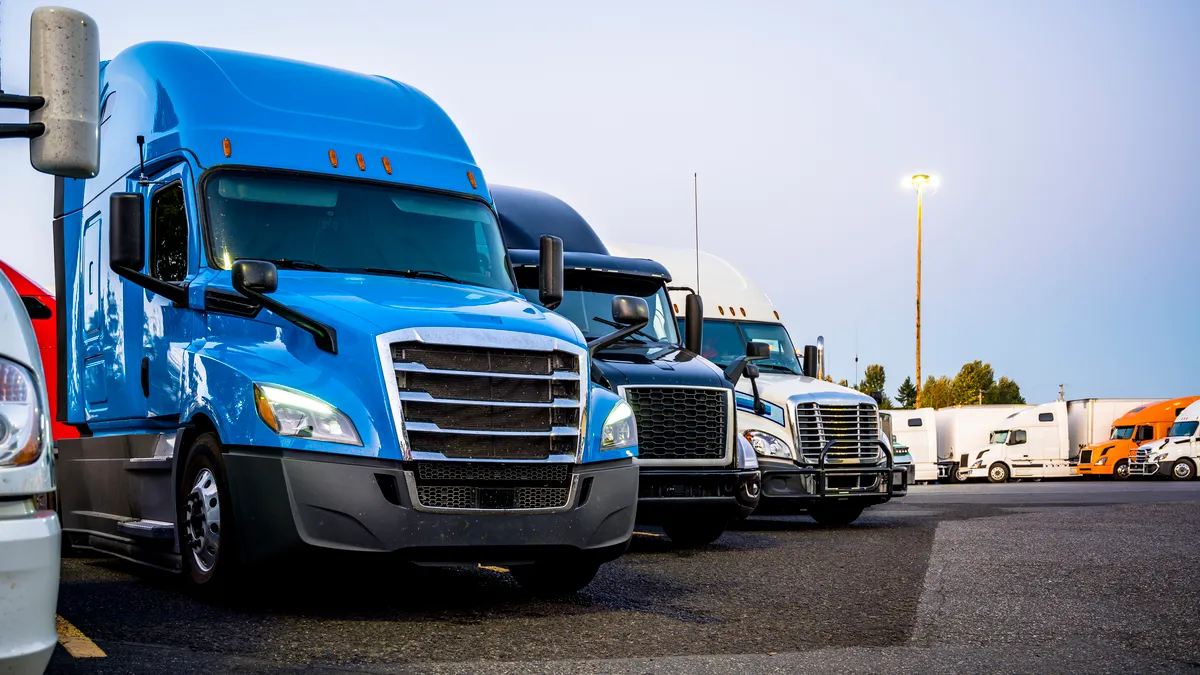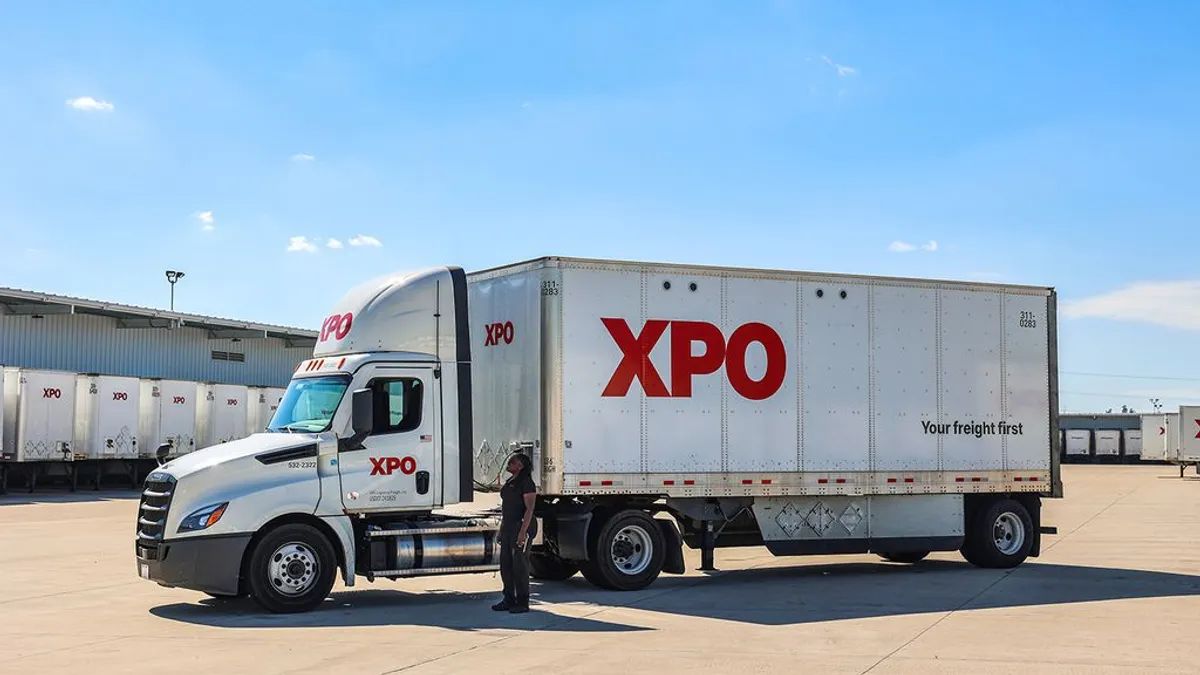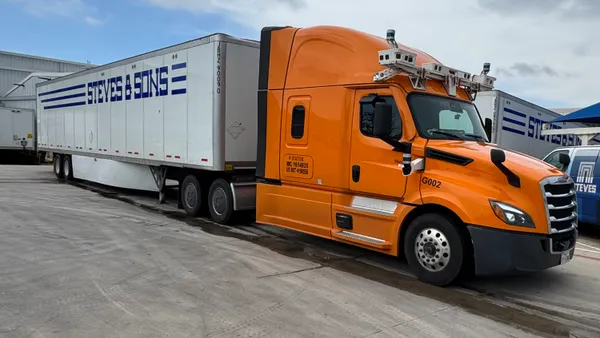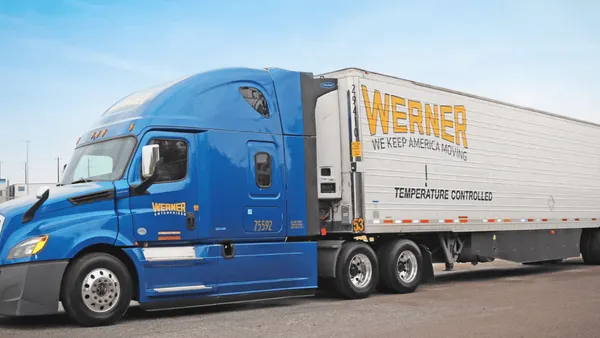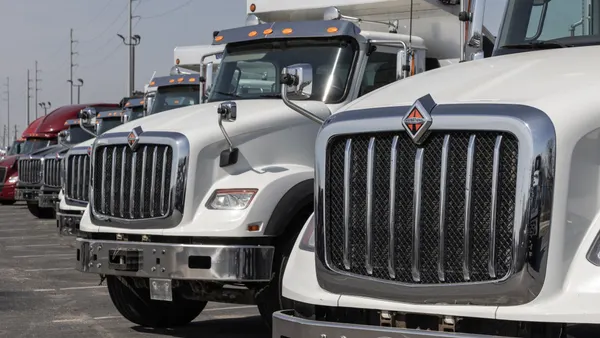Dive Brief:
- Schneider National and J.B. Hunt's expect difficulty replacing aging vehicles to continue into 2023, executives said during last week's Stephens Annual Investment Conference.
- Mark Rourke, president and CEO at Schneider, said while his company may get some of the new equipment it needs next year, OEMs also must fulfill orders from other trucking companies.
- Nick Hobbs, COO and president of contract services at J.B. Hunt, expects OEMs will ramp up production in 2023, despite ongoing supply chain issues.
Dive Insight:
While both companies expect OEMs to boost production in the coming year, uncertainty swirls around whether there will be enough new equipment to meet demand.
Getting new equipment presented a challenge for J.B. Hunt this year, Hobbs said.
“Over the last 18 months, we’ve added more than 3,000 trucks,” Hobbs said. “But to do that, we had to hold onto trucks much longer than we like in our normal trade cycle.”
He said OEMs continue to face parts shortages this year, particularly with microchips. While production challenges will persist, he expects conditions to improve in 2023.
“[OEMs] will not be up to full speed, so we’ll be facing challenges there again, but production will pick up some,” Hobbs said.
Data from FTR supports that idea. The research firm’s October report said component shortages remain a week-to-week issue, but “the overall sentiment from manufacturers is optimistic that improvements will be made in the coming months.”
As a result, the carrier executives said maintaining a schedule to replace aging truck fleets in 2023 will be as difficult as it was in 2022.
J.B. Hunt is proactively addressing its equipment needs by turning to a third supplier for new trucks, Hobbs said.
The tight environment has prompted many trucking firms to pursue alternative tactics for replacing their fleets. Acquisitions are one of them: with companies including Werner Enterprises and Pitt Ohio signing deals that include a sizable amount of equipment.
Rourke, meanwhile, doesn't expect Schneider will get all the new equipment it needs next year to keep up with its replacement schedule, because many other fleets also are waiting on truck orders.
“We don’t think we’re going to be fully caught up on that in 2023,” he said.



